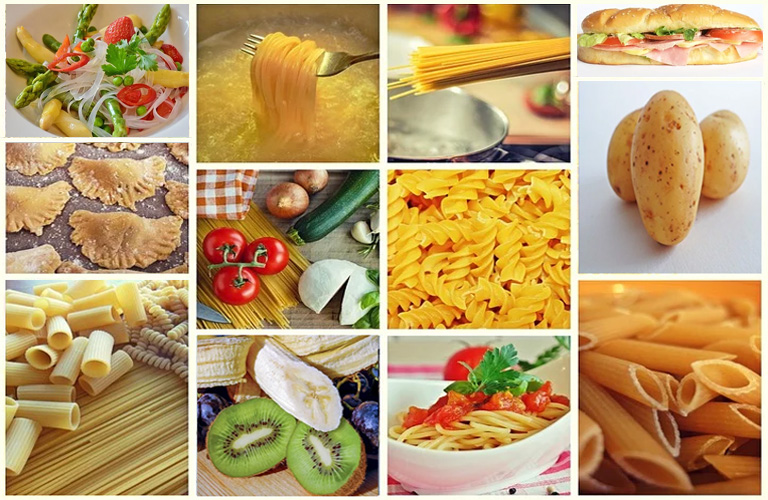Glycemic Index
The glycemic index (GI) is an indicator of how much a certain food raises blood sugar levels. Foods that have a higher glycemic index raise blood sugar levels higher and quicker than lover glycemic foods.
Glycemic index takes into account only the available carbohydrate (total carbohydrate minus fiber) in a food. It does not predict an individual's glycemic response to a food, but can be used as a tool to assess the insulin response burden of a food, averaged across a studied population. Individual responses can vary greatly. If you have diabetes, high GI foods can make it harder to control diabetes.
The glycemic index addresses these differences by assigning a number to foods that reflects how quickly they increase blood glucose compared to pure glucose (sugar). The GI scale goes from 0 to 100. Pure glucose has the highest GI and is given a value of 100.
Foods with a low glycemic index are often higher in fibre, which help you feel fuller for a longer time and help manage your weight.
Keep in mind that not all carbohydrates work the same in the body. Simple carbohydrates such as refined sugar provoke an insulin release into the blood, but complex carbohydrates such as whole grains, fruits, and vegetables do not, even though some of them too have a high glycemic index.
Some practical limitations of the glycemic index are:
- It does not measure insulin production due to rises in blood sugar. For some food comparisons, the insulin index may be more useful.
- It does not takes into account how much carbohydrate is in a serving of a particular food. This is where the glycemic load comes into play.
- Glycemic index charts often give only one value per food, but variations are possible due to ripenes, cooking methods, prosessing, storage and variety.
- The glycemic index only indicates the impact on glucose level two hours after eating the food but most people with diabetes have elevated levels for four hours or longer after eating certain foods.
- Also, the glycemic response is different from one person to another, and also in the same person from day to day, depending on blood glucose levels, insulin resistance, and other factors.
Note: That’s why researchers came up with the concept of glycemic load. It captures both the types of carbs in a food and the amount of carbs in a serving. Essentially, it shows how a portion of food affects your blood sugar. Many things affect the glycemic load, including food processing, how ripe a fruit is, how a food is prepared and how long it’s been stored.
Related Info:

There are three GI categories:
- Low: 55 or less - Non-starchy vegetables, greens, carrots; most nuts, legumes, and beans; bulgar, barley, quinoa, pasta, parboiled (converted) rice, oatmeal (steel-cut or rolled), high-fiber bran cereal; apples, oranges, grapefruit, and many other fruits; milk and yogurt.
- Medium: 56–69 - Pumpernickel bread, pita bread, rye bread, whole grain wheat bread, roti, couscous, brown rice, quick oats, instant oats, wild rice, cornmeal, crackers; beets, corn, parsnip, potato (red or white, cooled); pineapple, cherries, banana (ripe, yellow), cranberries (dried), raisins, lychee, kiwi, figs (fresh, dried), grapes.
- High: 70 or more - White bread, bagels, most processed cereals, naan, millet, sticky rice, Jasmine rice, instant white rice, most snack foods; potato (red or white, hot), potato (instant, mashed); banana (brown, overripe), watermelon.
It is important to know that it’s not just the types of carbohydrates that matter. The more carbohydrates you eat, the more your blood sugar rises.
When eating a high GI food, combine it with low GI foods to balance the effect on your glucose levels. The GI of a food changes when you combine it with other foods.
It makes sense for everybody, not only diabetics, to eat the more complex carbohydrates because they will be more gradually absorbed, and blood sugar highs and lows will be smaller. Whole foods with complex carbs will give you more minerals and vitamins, too, and are usually good sources of fiber.
Most foods that contain carbohydrates are nutritious and are an important part of a healthy diet. The goal is not to limit carbohydrates in the diet completely, but to make sure that you are not eating too many. Eating a regular amount of carbohydrates throughout the day can help keep your blood sugar level steady. Learn more...
The more processed a food is, the higher its glycemic index (GI).
Did You Know?
Glycemic load is much better way to measure carb consumption because it takes into account how much carbohydrate is in a serving of a particular food, including food processing, how ripe a fruit is, how a food is prepared and how long it’s been stored.Cooking methods are important! The more cooked, or over cooked, a food, the more its cellular structure is broken, with a tendency for it to digest quickly and raise blood glucose more.
Simple carbs are more quickly digested and absorbed than complex ones, so simple carbs can raise your blood glucose levels faster and higher.
Riper fruits contain more sugars, which is increasing their glycemic index.
Variety is important! Potatoes are a notable example, ranging from moderate to very high GI even within the same variety.
The GI of a food changes when you combine it with other foods.
If you want to find out how your body handle carbohydrates, you can do that by checking your blood sugar before, and 2 hours after, a meal. That is also the best way to know how your body handles certain foods and drinks.





